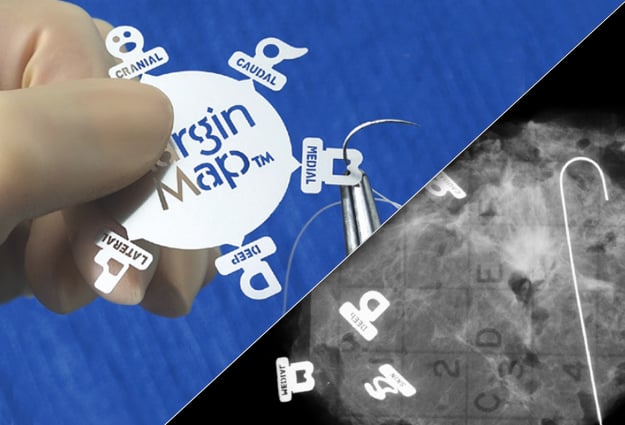
Surgeons employ a variety of methods to mark breast specimen margins and communicate specimen orientation to pathologists.
Whether it’s different length sutures, varying number of clips, or using multi-color dyes, inconsistency among surgeons within the same facility of healthcare setting can result in questions and confusion both in the operating room and pathology when a different method is used on every case performed.
When all surgeons use the same methodology to mark specimen margins for orientation communication is improved and the risk of error is greatly reduced as every specimen is marked the same way and communicates the same thing every time.
The case for orientation at a glance
Even if used consistently, there are some drawback to some methods commonly used to mark breast specimen margins. Sutures and dyes won’t communicate orientation on the specimen image, so if the radiograph reveals an inadequate margin the patient is subject to additional tissue removed from the entire lumpectomy site than may be necessary.
Other issues involve the fatty nature of breast tissue itself – by the time a specimen is delivered to pathology, sutures and clips may have sunk into the breast tissue making it hard for pathology to determine orientation.
MarginMap is a simple to use, accurate, and effective orientation system that helps surgical centers standardize their methodology for marking margins and communicate specimen orientation at a glance.
Consisting of six distinctly-shaped radiopaque charms which clearly identify their corresponding margin, MarginMap helps to significantly reduce the chance of miscommunication between surgical team members and other departments. The charms are clearly visible on the specimen and radiograph giving a clear depiction of the lumpectomy specimen orientation to pathology.
Team approach best for success
Changing habits and implementing standardized methodology can be a challenge, but well worth the effort. Standardization helps with risk reduction, process improvement, and ultimately patient care. If you’re on your journey toward standardization remember a team approach works best in choosing the method of communicating specimen orientation that works best for you. Your surgeons, nurses, radiologists, and pathologists all need to be on board for standardization to be successful.

Mary Lang Pelton
Director of Marketing Communications
